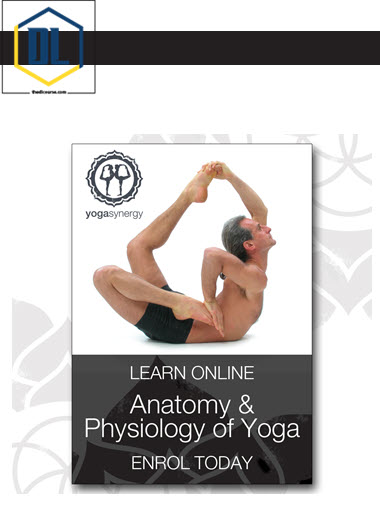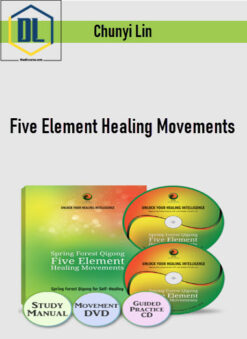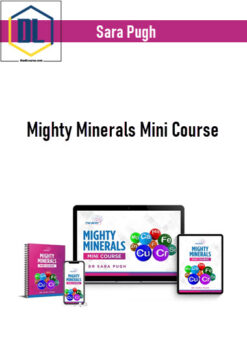-
×
 Elma Mayer – Now Healing 101 Home Study Course
2 × $19.00
Elma Mayer – Now Healing 101 Home Study Course
2 × $19.00 -
×
 Steven Heller – Unconscious Restructuring
2 × $19.90
Steven Heller – Unconscious Restructuring
2 × $19.90 -
×
 Hit The Mark Trading – Just Day Trade
1 × $30.00
Hit The Mark Trading – Just Day Trade
1 × $30.00 -
×
 Carole Dore – How To Give Power Treatments
1 × $43.00
Carole Dore – How To Give Power Treatments
1 × $43.00 -
×
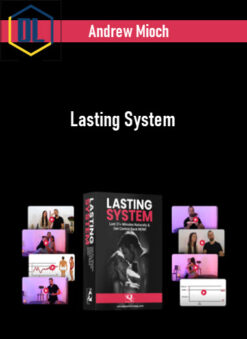 Andrew Mioch – Lasting System
2 × $273.00
Andrew Mioch – Lasting System
2 × $273.00 -
×
 Ashlyn Carter – Copywriting For Creatives
1 × $95.70
Ashlyn Carter – Copywriting For Creatives
1 × $95.70 -
×
 David Snyder – Defense Against The Dark Arts
1 × $47.00
David Snyder – Defense Against The Dark Arts
1 × $47.00 -
×
 Complete 32+ Hour Video Training Course 2008
4 × $25.00
Complete 32+ Hour Video Training Course 2008
4 × $25.00 -
×
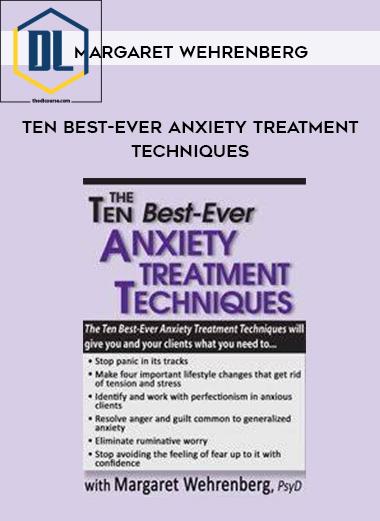 Ten Best-Ever Anxiety Treatment Techniques – Margaret Wehrenberg
1 × $59.00
Ten Best-Ever Anxiety Treatment Techniques – Margaret Wehrenberg
1 × $59.00 -
×
 Anastasia – Pinterest SEO Traffic Secrets
1 × $17.00
Anastasia – Pinterest SEO Traffic Secrets
1 × $17.00 -
×
 BRYAN KREUZBERGER – BREAKTHROUGH EMAIL
1 × $9.00
BRYAN KREUZBERGER – BREAKTHROUGH EMAIL
1 × $9.00 -
×
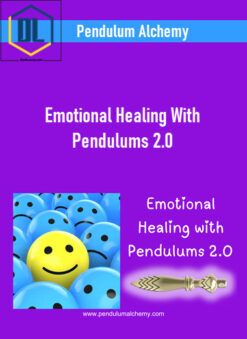 Pendulum Alchemy – Emotional Healing With Pendulums 2.0
2 × $29.00
Pendulum Alchemy – Emotional Healing With Pendulums 2.0
2 × $29.00 -
×
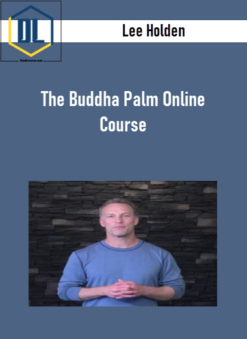 Lee Holden – The Buddha Palm Online Course
1 × $87.00
Lee Holden – The Buddha Palm Online Course
1 × $87.00 -
×
 Talmadge Harper – Singularity: Remote Viewing
1 × $15.00
Talmadge Harper – Singularity: Remote Viewing
1 × $15.00 -
×
 Jerry Norton – Power Flipper 3x 3.0
1 × $117.00
Jerry Norton – Power Flipper 3x 3.0
1 × $117.00 -
×
 Zac Hansen – The Productized Community
1 × $29.00
Zac Hansen – The Productized Community
1 × $29.00 -
×
 Sean D’Souza – The Brain Audit 3-Day Workshop
1 × $37.00
Sean D’Souza – The Brain Audit 3-Day Workshop
1 × $37.00 -
×
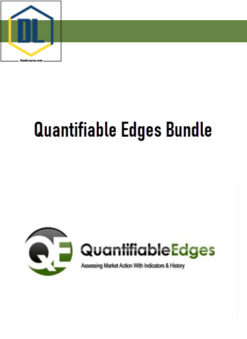 Quantifiable Edges Bundle
1 × $45.00
Quantifiable Edges Bundle
1 × $45.00 -
×
 Joseph Riggio – 7 Days to Genius – Make 2018 Your Best Year Ever GB
1 × $55.00
Joseph Riggio – 7 Days to Genius – Make 2018 Your Best Year Ever GB
1 × $55.00 -
×
 Amber Figlow – The Content System
1 × $9.00
Amber Figlow – The Content System
1 × $9.00 -
×
 Product University – Unique Amazon Strategy
2 × $92.00
Product University – Unique Amazon Strategy
2 × $92.00 -
×
 Austin Lovell – Freedom Fast Track
1 × $9.00
Austin Lovell – Freedom Fast Track
1 × $9.00 -
×
 Donna Eden – Meridians – Acupoints and Energy Checks
1 × $27.00
Donna Eden – Meridians – Acupoints and Energy Checks
1 × $27.00 -
×
 Donna Eden – Energy Medicine for Women – 2-Day Advanced Training
1 × $32.00
Donna Eden – Energy Medicine for Women – 2-Day Advanced Training
1 × $32.00 -
×
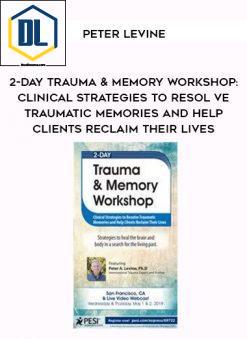 2-Day Trauma & Memory Workshop: Clinical Strategies to Resolve Traumatic Memories and Help Clients Reclaim Their Lives – Peter Levine
1 × $57.00
2-Day Trauma & Memory Workshop: Clinical Strategies to Resolve Traumatic Memories and Help Clients Reclaim Their Lives – Peter Levine
1 × $57.00 -
×
 Allie Bloyd – The Local Lead Generation Masterclass
1 × $19.00
Allie Bloyd – The Local Lead Generation Masterclass
1 × $19.00 -
×
 Tantra Body De-armouring Tutorials
1 × $65.00
Tantra Body De-armouring Tutorials
1 × $65.00 -
×
 All Products Special (Business Explained)
1 × $87.00
All Products Special (Business Explained)
1 × $87.00 -
×
 Alexander – Day Game Phone Game
1 × $9.00
Alexander – Day Game Phone Game
1 × $9.00 -
×
 Scott Sonnon/RMAX – The Mobility Ring
1 × $15.30
Scott Sonnon/RMAX – The Mobility Ring
1 × $15.30 -
×
 Julie Solomon – Pitch It Perfect
1 × $67.00
Julie Solomon – Pitch It Perfect
1 × $67.00 -
×
 FXC Trading – Holy Grail
1 × $35.00
FXC Trading – Holy Grail
1 × $35.00 -
×
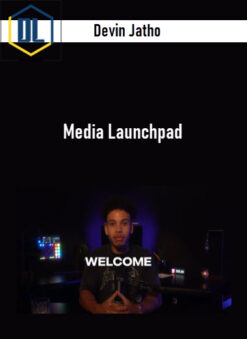 Devin Jatho – Media Launchpad
1 × $9.00
Devin Jatho – Media Launchpad
1 × $9.00 -
×
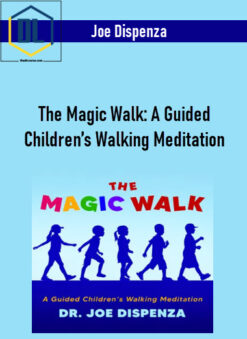 Joe Dispenza – The Magic Walk: A Guided Children’s Walking Meditation
1 × $10.00
Joe Dispenza – The Magic Walk: A Guided Children’s Walking Meditation
1 × $10.00 -
×
 Scott Sonnon – King of Clubs
1 × $23.00
Scott Sonnon – King of Clubs
1 × $23.00 -
×
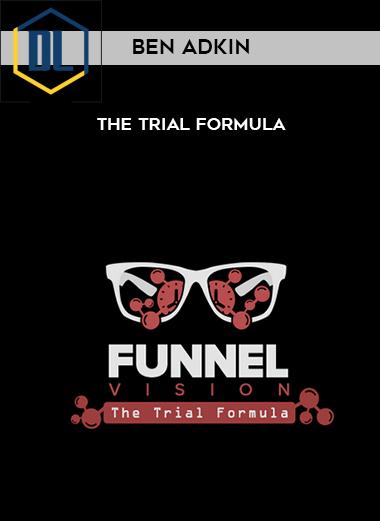 Ben Adkin – The Trial Formula
1 × $27.00
Ben Adkin – The Trial Formula
1 × $27.00 -
×
 Andrew Corentt – Powerful Seduction Subliminal Video System
1 × $27.00
Andrew Corentt – Powerful Seduction Subliminal Video System
1 × $27.00 -
×
 David Deutsch – A-List Copywriting Secrets
1 × $68.00
David Deutsch – A-List Copywriting Secrets
1 × $68.00 -
×
 Surplus Recovery Sprint To Success
1 × $77.00
Surplus Recovery Sprint To Success
1 × $77.00 -
×
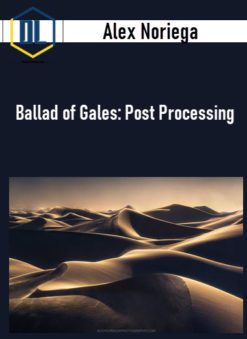 Alex Noriega – Ballad of Gales: Post Processing
1 × $17.00
Alex Noriega – Ballad of Gales: Post Processing
1 × $17.00 -
×
 Brenden Bytheway – The Filmmaker Guide To Audio
1 × $39.00
Brenden Bytheway – The Filmmaker Guide To Audio
1 × $39.00 -
×
 Qi Gong Training – Ultra Mi Zong Taoist Yoga
1 × $36.80
Qi Gong Training – Ultra Mi Zong Taoist Yoga
1 × $36.80 -
×
 Sean Flanagan – Pre- Vacant House Goldmine
1 × $28.00
Sean Flanagan – Pre- Vacant House Goldmine
1 × $28.00 -
×
 Master Trader – Learn Trading Late Day Breakouts & Breakdowns
1 × $19.00
Master Trader – Learn Trading Late Day Breakouts & Breakdowns
1 × $19.00 -
×
 Arash Dibazar – Deja vu
1 × $7.00
Arash Dibazar – Deja vu
1 × $7.00 -
×
 Carl Allen – Dealmaker Wealth Society
1 × $75.00
Carl Allen – Dealmaker Wealth Society
1 × $75.00 -
×
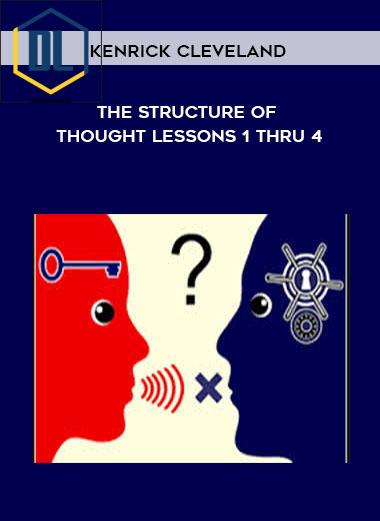 Kenrick Cleveland – Structure Of Thought
1 × $9.00
Kenrick Cleveland – Structure Of Thought
1 × $9.00 -
×
 ClicksGeek – Google Ads Agency Accelerator
1 × $99.00
ClicksGeek – Google Ads Agency Accelerator
1 × $99.00 -
×
 Lynne McTaggart – Developing Psychic Abilities
1 × $15.00
Lynne McTaggart – Developing Psychic Abilities
1 × $15.00 -
×
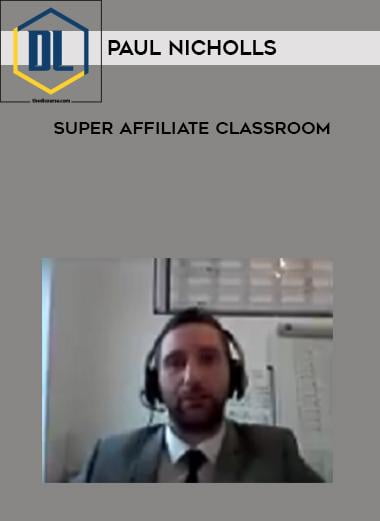 Paul Nicholls – Super Affiliate Classroom
1 × $42.00
Paul Nicholls – Super Affiliate Classroom
1 × $42.00 -
×
 Bob Proctor – Thinking Into Results
1 × $16.00
Bob Proctor – Thinking Into Results
1 × $16.00 -
×
 TraderLion – High Tight Flag Masterclass
1 × $47.00
TraderLion – High Tight Flag Masterclass
1 × $47.00
Buy With Coupon: DLC25 (-25%)
Simon Borg-Olivier – Anatomy and Physiology of Yoga
$587.00 Original price was: $587.00.$197.00Current price is: $197.00.
» Instant Delivery
SKU: LHR6ABOM
Categories: Health & Lifestyle, Instant Delivery
Tags: Anatomy and Physiology of Yoga, Simon Borg-Olivier
Description
Simon Borg-Olivier – Anatomy and Physiology of Yoga
Enhance your yoga practice, improve your yoga teaching. A must-do course for anyone interested in yoga!
- LEARN TO AVOID INJURY IN YOUR PRACTICE OR THAT OF YOUR STUDENTS
- BECOME PROFICIENT IN YOUR KNOWLEDGE OF THE ANATOMY OF THE BODY
- UNDERSTAND THE EFFECTS OF EXERCISE ON ALL THE SYSTEMS OF THE BODY
- EXPERT INSTRUCTORS – HIGHLY ACCLAIMED
- GAIN CONTINUING EDUCATION POINTS
Anatomy And Physiology of Yoga Online provides yoga teachers and students with the knowledge and skills necessary to understand the basic workings of the body while practicing asanas (static postures), vinyasas (dynamic exercises) and pranayamas (breathing exercises) of Hatha yoga.
Learn how to safely increase strength and flexibility whilst minimising the risks of injury due to unsafe practice.
- The online Applied Anatomy and Physiology course contains recorded video lectures and written information.
- All content is downloadable.
- You will have access to the course material for 6 months.
What you’ll learn in Anatomy and Physiology of Yoga:
WEEK 1:Introduction to the applied anatomy and physiology of yoga Topic 1.1: The purpose of yoga
- Topic 1.2: Introduction to functional musculoskeletal anatomy Includes how to simplify 250 joints of the body to 9 joint complexes and how to simplify 650 muscles to 20 muscle group pairs.
- Topic 1.3: Introduction to the functional anatomy and physiology of the nervous system Includes how to use your nerves to develop length, strength and relaxation in your muscles without stress, strain or pain.
- Topic 1.4: Stretching, strengthening and relaxation and the relationship between them Includes how to create 18 bandhas throughout the body that can stabilise your joints and move energy and information. through your body
Week 2: Applied functional anatomy of the upper limb (A)
- Topic 2.1: Applied functional anatomy of the shoulder joint complex (Amsa Bandha) Includes how to use your shoulder during yoga and exercise to develop core strength as well as nourish your trunk, neck, heart and lungs.
Week 3: Applied functional anatomy of the upper limb (B)
- Topic 3.1: Applied functional anatomy of the elbow joint complex (Kurpara Bandha) Includes how to control and strengthen your your elbows during yoga and exercise and use them to stabilise and strengthen your wrists and shoulders.
- Topic 3.2: Applied functional anatomy of the wrist joint complex (Mani Bandha) Includes how to strengthen your arms during yoga and exercise and use them to manipulate your spine.
Week 4: Applied functional anatomy of the lower limb (A)
- Topic 4.1: Applied functional anatomy of the hip joint complex (Kati Bandha) Includes how to use your hips during yoga and exercise to develop core strength as well as nourish your trunk, digestive organs and reproductive system.
WEEK 5:Applied functional anatomy of the lower limb (B)
- Topic 5.1: Applied functional anatomy of the knee joint complex (Janu Bandha) Includes how to keep your knees safe during yoga and exercise and how to recover after knee injuries.
Week 6: Applied functional anatomy of the lower limb (C)
- Topic 6.1: Applied functional anatomy of the ankle joint complex (Kulpha Bandha) Includes how to strengthen your ankles and use your legs during yoga and exercise to mobilise the spine and treat your internal organs.
Week 7: Applied functional anatomy of the spine and the torso (waist, chest, neck and head)
- Topic 7.1: Applied functional anatomy of the waist joint complex (Mula Bandha) Includes how to achieve core stabilisation without causing excessive stress and inhibiting your internal organs.
- Topic 7.2: Applied functional anatomy of the chest joint complex (Uddiyana Bandha) Includes how to use your chest and upper back to mobilise your spine, stabilise your trunk and control your heart and lungs.
- Topic 7.3: Applied functional anatomy of the neck joint complex (Jalandhara Bandha) Includes how to maintain a pain-free and stable neck while allowing a free conduit for the flow of energy and information between your brain and the rest of your body
Week 8: The effects of exercise and breathing on the cardiopulmonary system
- Topic 8.1: Applied functional anatomy and physiology of the cardiopulmonary system
- Topic 8.2: The effects of breath-control exercises of Indian hatha yoga and Chinese Taoist yoga on the main body systems (Pranayama) Includes how to use breath-control to control the movement of oxygenated blood from your heart and lungs through the rest of your body effectively.
WEEK 9:The effects of exercise and breathing on the nervous system
- Topic 9.1: Applied functional anatomy and physiology of the nervous system
- Topic 9.2: Effects of Indian hatha yoga and Chinese Taoist yoga on the nervous system, the acupuncture meridian system and the cakra-nadi-marma system Includes how to use an understanding of your nervous system to tension (stretch) nerves and acupuncture meridians; how to direct the movement of energy and information through your body; and what you need to do to achieve blissful and nourishing states of internal silence and meditation.
Week 10: The effects of exercise and breathing on the body systems (A)
- Topic 10.1: Applied functional anatomy and physiology of the digestive system
- Topic 10.2: Effects of Indian hatha yoga and Chinese Taoist yoga on the digestive system Includes yogic nutrition and how you can learn to comfortably eat less to live longer and healthier.
- Topic 10.3: Applied functional anatomy and physiology of the immune system
- Topic 10.4: Effects of Indian hatha yoga and Chinese Taoist yoga on the immune system Includes how to use exercise, diet and breathing to nourish your immune system to quickly and effectively recover from injury or illness.
- Topic 10.5: Applied functional anatomy and physiology of the renal system
- Topic 10.6: Effects of Indian hatha yoga and Chinese Taoist yoga on the renal system Includes how to use exercise and breathing to nourish your kidneys and harness your inner energy.
- Topic 10.7: Applied functional anatomy and physiology of the male reproductive system Topic 10.8: Effects of Indian hatha yoga and Chinese Taoist yoga on the male reproductive system Includes how to use yoga and breath-control to nourish the male reproductive system, enhancing fertility, hormone health and sexual function.
Week 11: The effects of exercise and breathing on the body systems (B)
- Topic 11.1: Applied functional anatomy and physiology of the female reproductive system
- Topic 11.2: Effects of Indian hatha yoga and Chinese Taoist yoga on the female reproductive system Includes how to use exercise, diet and breathing to nourish the female reproductive system; how to approach yoga during menstruation; how to practice yoga and exercise during and after pregnancy; and how to present safe yoga to the developing child.
- Topic 11.3: Applied functional anatomy and physiology of the endocrine system
- Topic 11.4: Effects of Indian hatha yoga and Chinese Taoist yoga on the endocrine system and the cakra-nadi-marma system Includes how to use exercise, diet and breathing to nourish your endocrine system; the use of mental control in the emerging field of pyscho-neuro-immunology; and the relationship between the endocrine glands, nerve plexuses and yogic chakras.
Week 12: Comparative eastern/western applied anatomy and physiology of exercise and breathing
- Topic 12.1: The effects of special yoga asanas (static postures), vinyasas (dynamic exercises), pranayamas (breath-control exercises), kriyas (cleansing processes) and mudras (energy control techniques) of Indian hatha yoga and Chinese Taoist yoga on the body Includes explanations and instructions on yogas most closely guarded secrets, the incredible abilities they can offer and the reasons why they have been kept as secret traditions for so long.
- Topic 12.2: Comparison of the systems of Indian and Chinese medical science with western medical science Includes how to benefit from a western scientific approach to traditional yoga, and how to benefit from an eastern approach to Western exercise.
Week 13: Exam
- Topic 13.1: Course revision
- Topic 13.2: End of course multiple choice exam
Weeks 14-16: Revision
Readmore about: Simon Borg-Olivier
Delivery Policy
When will I receive my course?
You will receive a link to download your course immediately or within 1 to 21 days. It depends on the product you buy, so please read the short description of the product carefully before making a purchase.
How is my course delivered?
We share courses through Google Drive, so once your order is complete, you'll receive an invitation to view the course in your email.
To avoid any delay in delivery, please provide a Google mail and enter your email address correctly in the Checkout Page.
In case you submit a wrong email address, please contact us to resend the course to the correct email.
How do I check status of my order?
Please log in to TheDLCourse account then go to Order Page. You will find all your orders includes number, date, status and total price.
If the status is Processing: Your course is being uploaded. Please be patient and wait for us to complete your order. If your order has multiple courses and one of them has not been updated with the download link, the status of the order is also Processing.
If the status is Completed: Your course is ready for immediate download. Click "VIEW" to view details and download the course.
Where can I find my course?
Once your order is complete, a link to download the course will automatically be sent to your email.
You can also get the download link by logging into your TheDLCourse account then going to Downloads Page.
Related products
-74%
-65%
-74%
-73%
-60%
-69%


